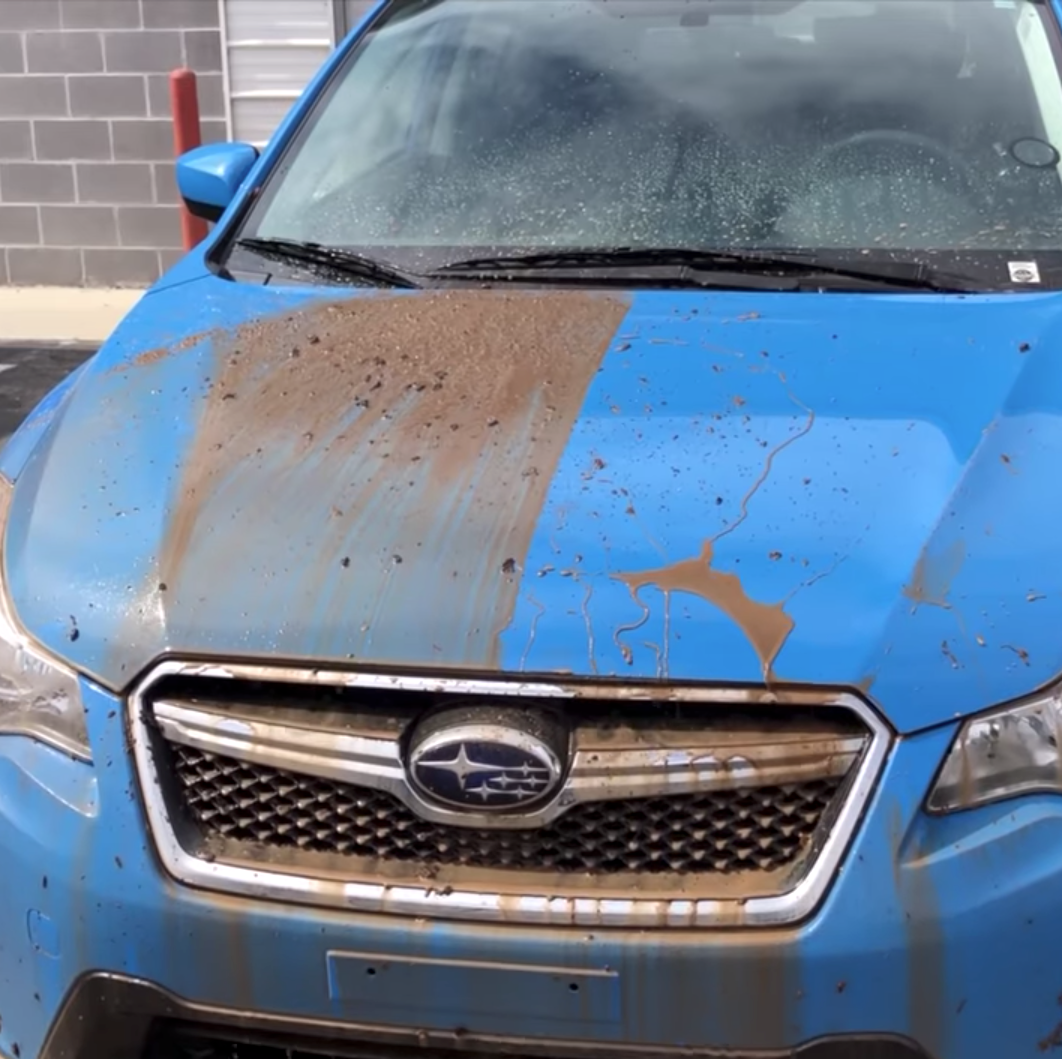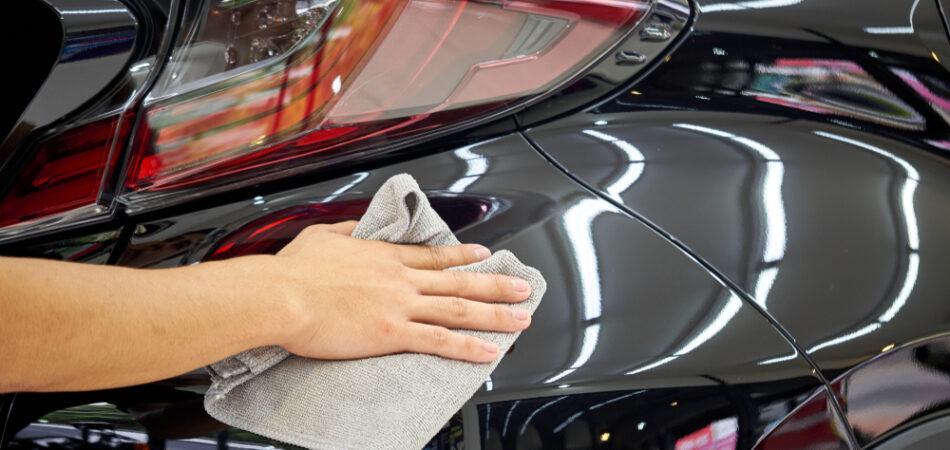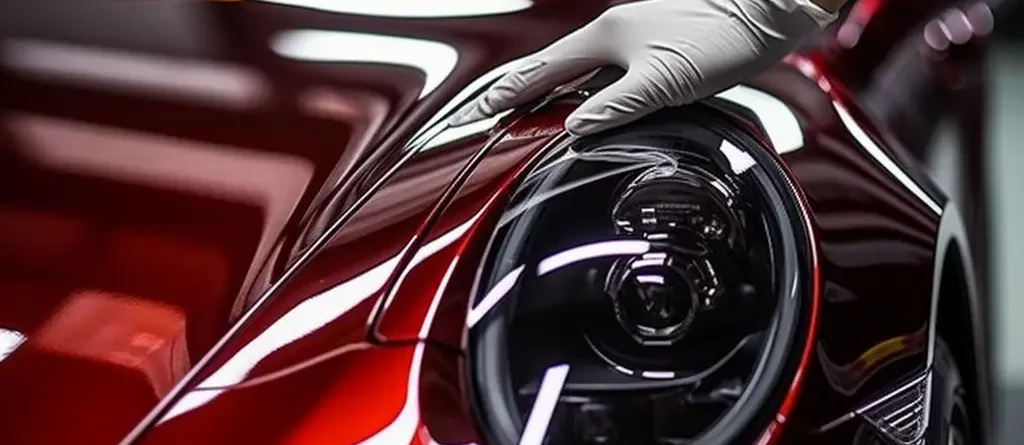Ceramic Coating: The Future of Automotive Surface Protection
Ceramic Coating: The Future of Automotive Surface Protection
Blog Article
Ceramic Coating vs. Conventional Wax: Which Gives Better Long-Term Defense?
The argument between ceramic layers and conventional wax for lorry security has amassed significant focus amongst automotive enthusiasts and professionals alike. While both satisfy of protecting paint, their distinctions in longevity, application, and lasting upkeep prices might affect a consumer's option. Ceramic finishings flaunt exceptional longevity and resistance to ecological elements, yet the intricacy of their application raises questions concerning ease of access and functionality. As we discover these contrasting options, it comes to be important to take into consideration not just the instant advantages however additionally the ramifications for lorry treatment in time.
Summary of Ceramic Coating
Ceramic covering has actually acquired considerable popularity amongst auto enthusiasts and detailers alike due to its innovative protective qualities. This ingenious technology is developed to produce a long lasting, hydrophobic shield over an automobile's paint surface area, considerably boosting its resistance to environmental impurities such as dust, UV rays, and chemical stains. Unlike typical wax, which gives a short-term layer of security, ceramic finishes bond at a molecular degree with the paint, supplying resilient longevity-- often extending past 2 years with proper upkeep.
The application procedure entails meticulous preparation of the automobile's surface area, consisting of cleaning and polishing to guarantee optimal adhesion. As soon as applied, the finishing cures to form a robust layer that not only includes depth and gloss to the paint but also streamlines upkeep. With its hydrophobic properties, ceramic coating allows water and dust to slide off even more conveniently, lowering the regularity of laundries and reducing the danger of swirl marks.
Moreover, ceramic finishes are offered in numerous solutions, allowing individuals to select products customized to their certain demands and preferences. Overall, ceramic covering stands for a considerable development in paint defense modern technology, delivering exceptional efficiency contrasted to conventional choices.
Introduction of Standard Wax
Commonly considered a staple in automotive treatment, wax functions as a preferred choice for those looking for an uncomplicated method to boost and shield their automobile's paint - ceramic coating. Automotive wax usually makes up natural ingredients, such as carnauba, or synthetic substances, developed to develop a protective layer on the surface of the paint. This layer not only boosts the lorry's gloss and radiate but additionally offers a barrier versus ecological pollutants
The application of wax is usually straightforward, making it obtainable for both experts and DIY fanatics. When applied, wax calls for a curing period, after which it solidifies to create a safety shell.
Nevertheless, while wax is reliable for enhancing the aesthetic charm of a car, it is essential to note that the protection it provides might require extra constant reapplication compared to alternative products, such as ceramic layers. In general, standard wax continues to be a preferred choice for those prioritizing ease of usage and prompt visual renovation.
Toughness and Durability Comparison
While both ceramic finishes and typical wax deal protective benefits for automobile paint, their toughness and durability vary considerably. Conventional wax, commonly made from natural carnauba or synthetic polymers, generally gives a protective layer that lasts about three to six months. This relatively brief life expectancy necessitates routine reapplication to preserve optimum protection.
In comparison, ceramic coverings are crafted from advanced nanotechnology, forming a covalent bond with the paint surface area. This causes a robust, hydrophobic layer that can withstand for two to 5 years, relying on the item and environmental conditions. The exceptional sturdiness of ceramic coverings is credited to their chemical framework, which uses improved resistance to scratches, UV rays, and oxidation.

Defense Versus Environmental Factors
Safeguarding a lorry's paint from ecological factors is important for preserving its look and worth with time. Cars are frequently exposed to a variety of aspects, including UV rays, bird droppings, tree sap, acid rainfall, and road gunk, all of which can jeopardize the integrity of the paintwork.
Ceramic finishes supply a robust defense versus these ecological aggressors. Unlike typical wax, which can deteriorate rapidly under UV direct exposure, ceramic layers create official site a durable, hydrophobic layer that stands up to the damaging results of sunshine and toxic wastes. This advanced modern technology creates a chemical bond with the vehicle's surface, providing superior defense that lasts for several years, even in rough problems.
In comparison, ceramic layers keep their protective high qualities longer, dramatically reducing the danger of paint damages and guaranteeing that the vehicle keeps its aesthetic appeal. As an outcome, from this source ceramic layers are significantly recognized as the remarkable option for lasting defense against ecological aspects.
Application and Maintenance Distinctions
The approaches of application and succeeding maintenance for ceramic coverings and traditional wax vary dramatically, affecting the general user experience and effectiveness of each product. Ceramic coverings require an even more detailed application procedure, normally including surface area prep work that consists of cleaning, sanitizing, and polishing the lorry. When the surface area is ready, the ceramic layer is used in a regulated atmosphere, frequently requiring expert expertise to make certain proper treating and bonding to the paint.

While both products boost lorry appearance, the longer-lasting security used by ceramic coverings may validate their preliminary financial investment, regardless of the even more requiring application process. Conversely, traditional wax stays a preferred option for those seeking a simpler, albeit temporary, remedy.

Verdict
Finally, ceramic finishings show considerable advantages over conventional wax in regards to toughness and environmental security. With a life expectancy expanding two to 5 years and exceptional resistance to UV rays, dust, and chemical check it out spots, ceramic finishes provide an extra efficient service for long-term vehicle upkeep. The application procedure may call for professional knowledge, the resulting cost financial savings and reduced frequency of reapplication emphasize the value of ceramic coatings for those looking for optimal vehicle security.
The discussion in between ceramic coatings and standard wax for car security has amassed considerable attention amongst automotive fanatics and experts alike. Unlike typical wax, which provides a momentary layer of security, ceramic layers bond at a molecular degree with the paint, providing lasting toughness-- frequently expanding beyond two years with correct upkeep.
While both ceramic layers and traditional wax offer safety benefits for auto paint, their durability and durability vary significantly. For auto enthusiasts looking for long-term protection, ceramic layers provide a compelling advantage over standard wax items.
In verdict, ceramic coatings demonstrate substantial advantages over conventional wax in terms of durability and environmental security.
Report this page